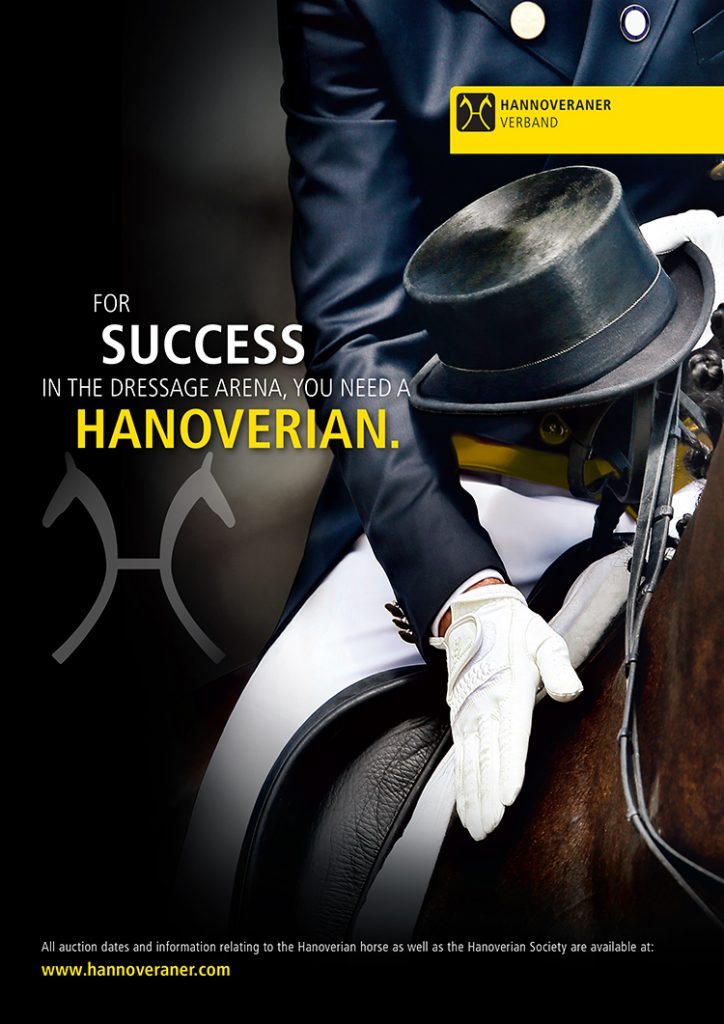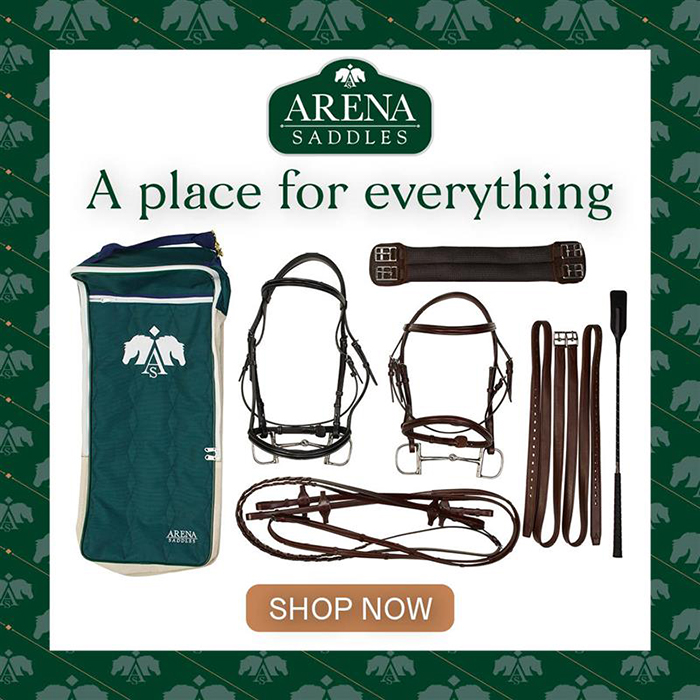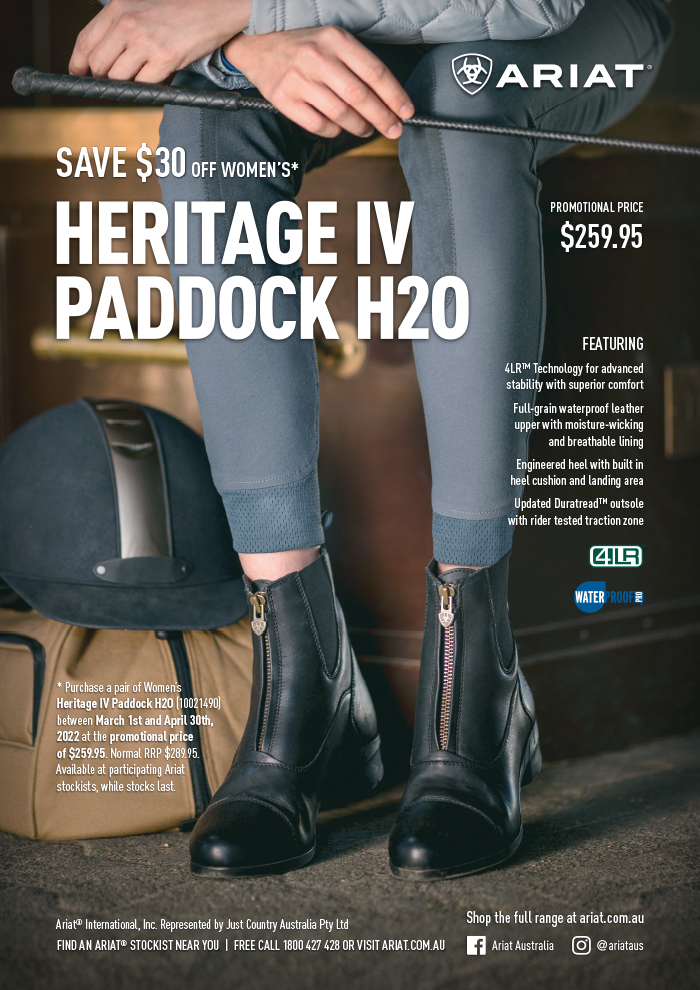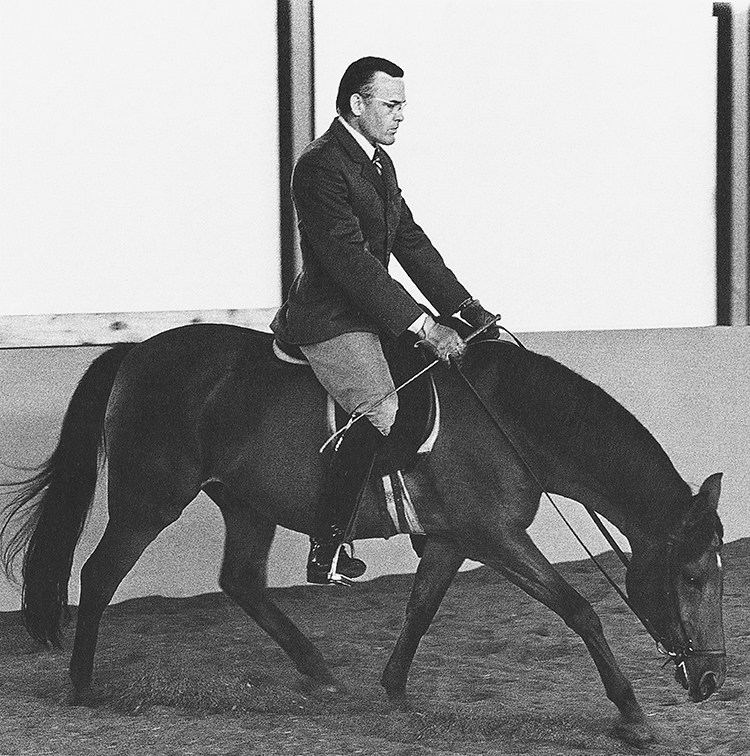
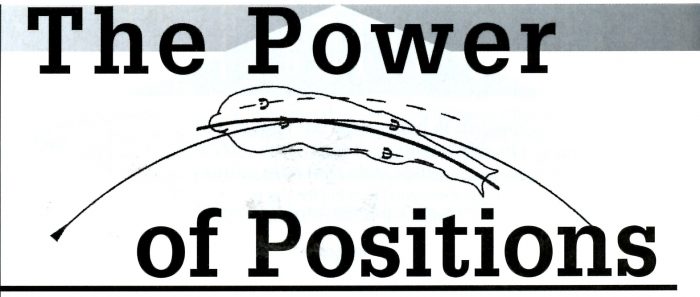
Erik F. Herbermann continues his discussion of the ways in which the rider can help the novice – uneducated horse – progress to the more Advanced movements.
In Part I of this article, the first two positions used in training a young horse were described. (to go to the first article click)
Here, in Part 2, the last four positions will be analysed. The deeper value and positive impact of these next stages will only materialise when they are built on the successful completion of requirements stipulated for the first stages.
STAGE III
Bent-While-Straight: Lining Up the Inside Legs
* This is a microscopic croup-in or travers. It is commonly known as position, the attitude which the rider will be using for most work from here on.
* It is still single-track work.
* The horse must remain even in both reins, while now staying lined up on the inside legs.
* Because of the bend in the body (as described earlier in Stage 11 ), the hind legs will continue to travel closely together, only this time the outside hind leg will be travelling on a path between the two front legs.
* Begin to teach the horse this work on straight lines.
* When this position is ridden on a circle it constitutes the second phase of bending: Bend and movement towards the bend (see Fig. 7, S 3, 3X & 3Y).
Figure 7:
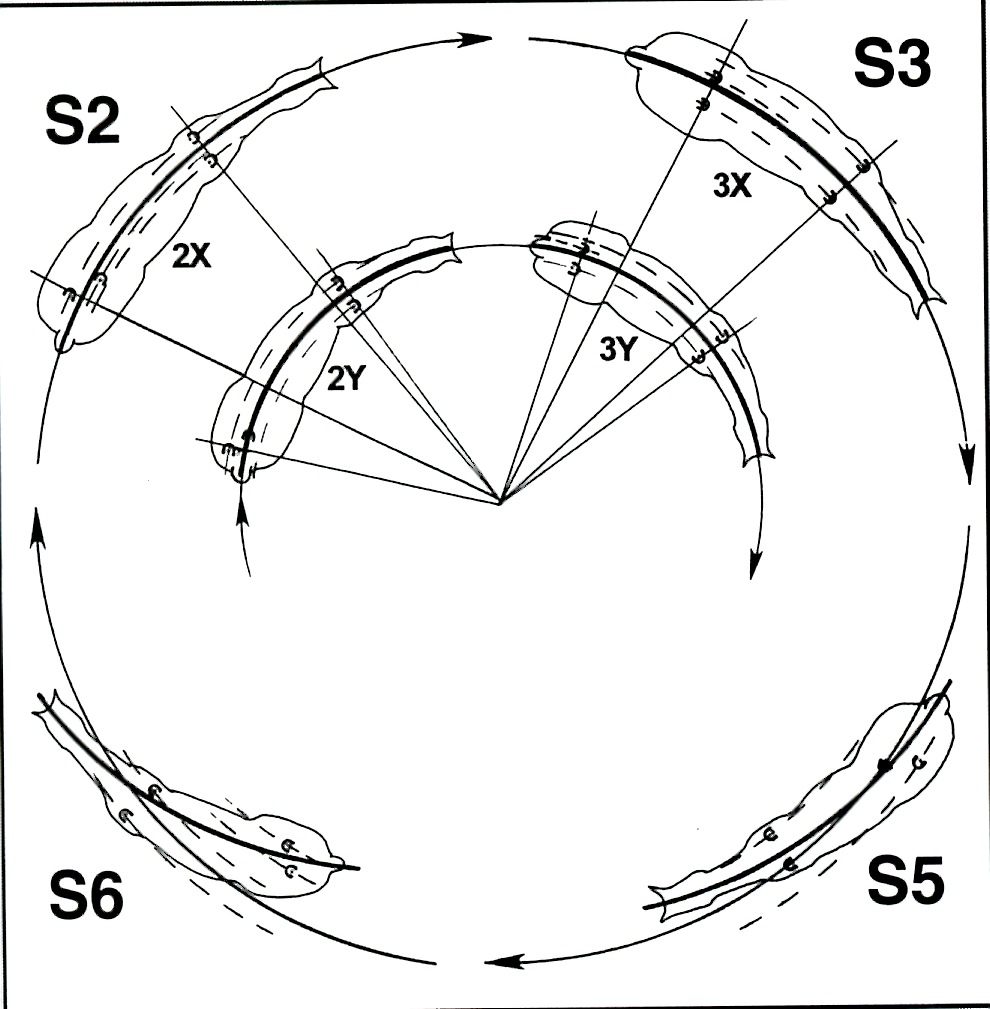
It cannot be sufficiently strongly emphasised how important it is to work on straight lines while initially teaching the horse how to bend its body while keeping its inside legs lined up. Why? Because it is easier to control the straightness of the horse’s travel on a linearly straight line, and thereby gain and maintain the accurate direction of the energy to both reins. Only with such control can this position then be more easily transferred to the bent lines where it can consistently and predictably play its role in helping the rider to bend the joints of the hind legs.
Story continues below the advertisement
Only when the horse and rider can easily maintain this position on straight lines while keeping the horse stepping evenly into both reins, can it be transferred successfully to the circle work. And only then (when used on circles or bent lines) does this position become the first avenue through which we can deliberately affect the amount of bend in the hind legs.
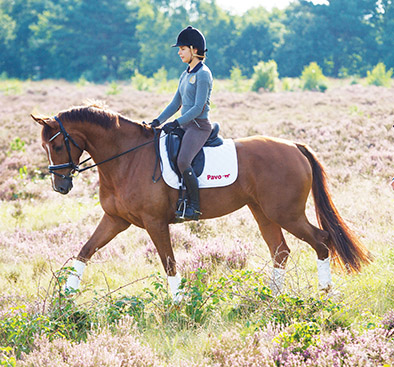
Don’t over practise, especially when the horse starts to get the idea. Endless grinding only sours the horse, whereby he becomes less willing to offer the rider anything of his own…
Let’s see how this works.
When travelling on a circle with the inside legs lined up, the inside legs travel a shorter distance than the outside legs (see Fig. 7, S3, 3X and 3Y) and if the horse expends the same amount of energy with both hind legs as it should (made evident by the fact that it remains even in both reins), then the inside hind leg will use up that energy by bending its joints more, which consequently results in a higher, rounder stride, while the outside hind leg will continue to make, relatively speaking, a longer and flatter step.)
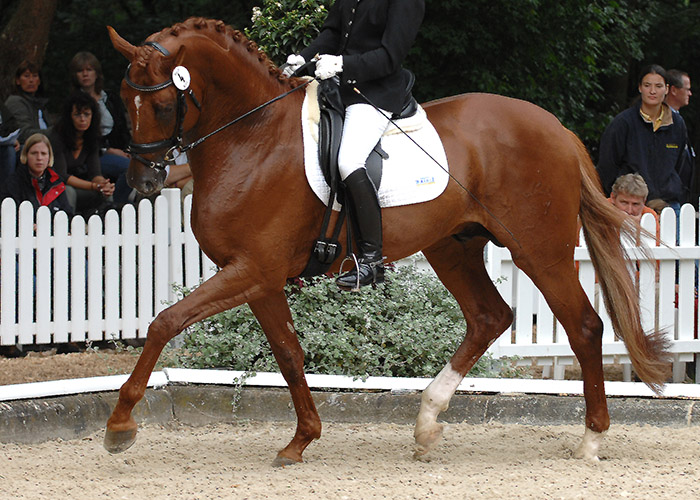
The smaller the circle the more we need to bend the horse’s body (to maintain its spine on the arc of the curve being ridden) and the more it would subsequently tend towards having to bend and load its inside hind leg. By contrast, the horse would hardly feel the need to bend the inside leg at all while doing this position on straight lines.
Choosing a suitable size of circle for the horse’s level of development is therefore very important, so that we do not over-load or over-bend, an ill-prepared horse. We should so gradually introduce these concepts to the horse that it hardly even knows (because of stress, tiredness or pain) that its hind legs are being bent or loaded. Overfacing here is indeed most counterproductive, because we would readily teach the horse how to find self-protective evasions.
story continues below the advertisement
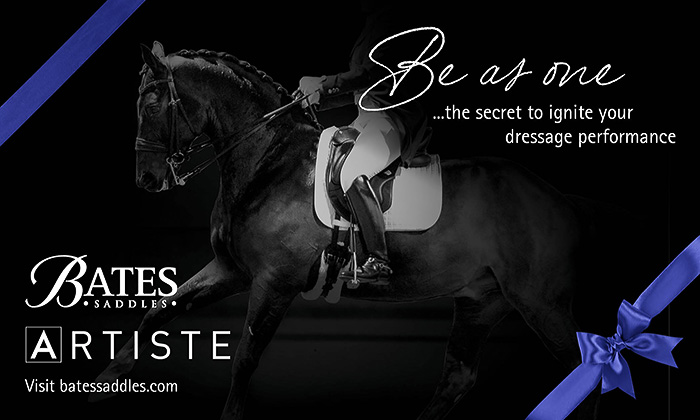
Note: If a horse has been forcibly trained, the above mentioned effects and benefits will not show themselves. This applies in particular to those which have been forced into a head position with any hand oriented training. When the horses are crammed together into an artificial form between the seat/leg and hand, the hindquarters will not ever lower or bend in its major joints. This pertains regardless of either the amount of bend we might be able to attain in the body or the supposed suppleness we might achieve through the commonly-seen lateral see-sawing of the horses’ necks by our hands.
Such misdirected influences only get the horses to be slack in the neck, reserved in their forwardness, and not truly supple at all. True suppleness is only achieved through energetic forward impulse travelling through the horse’s body, which liberates the horse because of the resulting balance on the hindquarters.
Steinbrecht warns us that if we try to coerce the hind legs to bend through forceful means, not only will we most assuredly fail to achieve our goal but the horses will likely end up breaking down in their hocks and/or in their back (tying up,… spasms of the loin muscles) because of this. These are certainly common ‘diseases’ of today’s dressage horses.
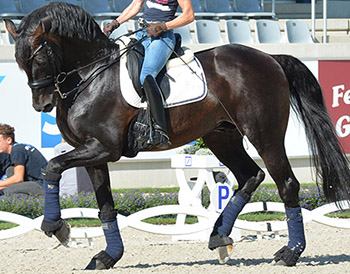
When the horses are crammed together into an artificial form between the seat/leg and hand, the hindquarters will not ever lower or bend in its major joints. This pertains regardless of either the amount of bend we might be able to attain in the body or the SUPPOSED suppleness we might achieve through the commonly seen lateral see-sawing of the horses’ necks by our hands…
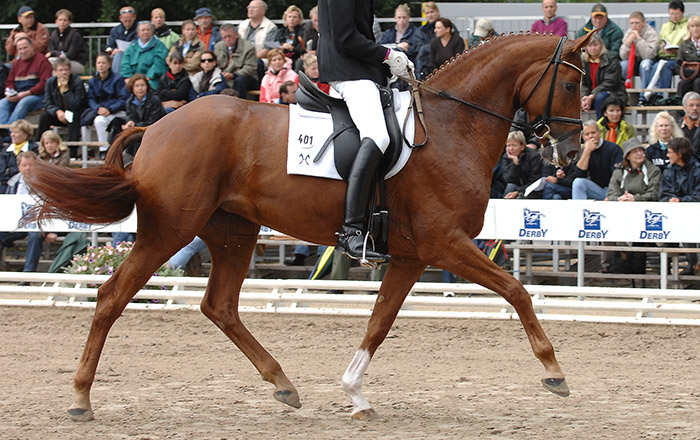
General Comments:
Most of this work should be done in a good, forward, rhythmic working trot. Alternate between sitting and rising trot. Change the rein reasonably frequently, giving each hind leg time to work/bend/load as an inside leg and then to rest as an outside leg. Do not spend more time on the horse’s weaker side. Use some forward and down, now and then, to promote continued elastic suppleness and ‘aliveness’ in all the muscles, and therefore fluidity in the gaits.
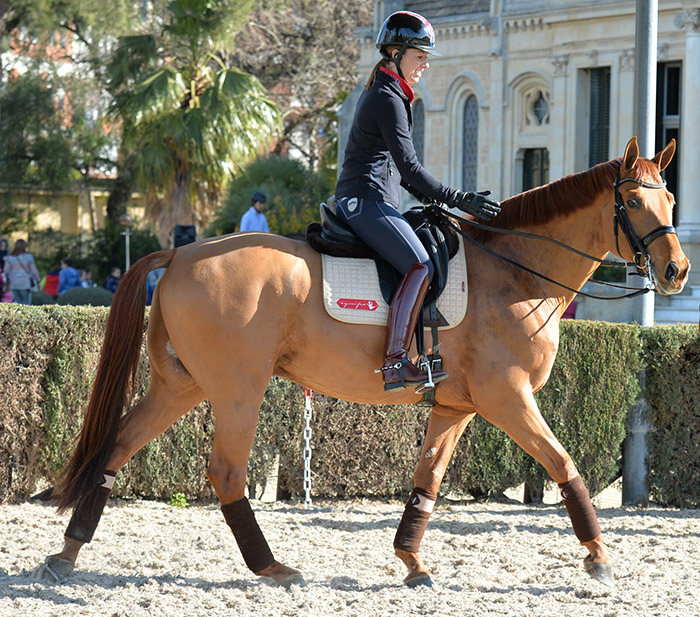
Give reasonable work/rest cycles.
Don’t over practice, especially when the horse starts to get the idea. Endless grinding only sours the horses, whereby they become less willing to offer the rider anything of their own.
more below
At this point transitions, small variations of lengthen/shorten strides, and half halts become more and more useful tools. But as with all things, moderation is the key to success. Remember that transferring the weight to the hindquarters can only begin successfully when the hind legs are bent unforcibly and easily. And then, when they do begin to bend, we must take great care not to become greedy and end up overloading them, either by spending too much time in collection or by overcollecting at any given moment.
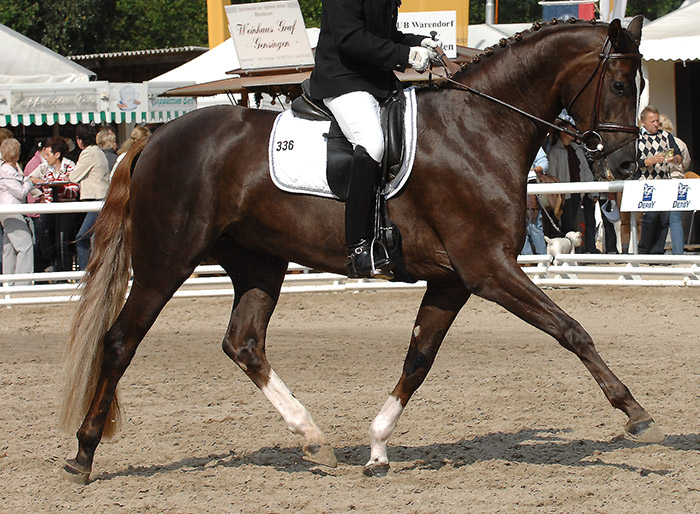
Things can turn sour very quickly, so ‘hurry slowly’. Through alternating judiciously between moments of putting greater stress on the hindquarters on varying sizes of smaller circles and on the other hand, freeing the horse up with more open working gaits on large school figures, we can begin to learn how to balance out the forward-pushing impulsive energy with the bending/loading, collecting energy.
If the horse plays along easily with the requirements of Stage II, we can proceed with the next phase.
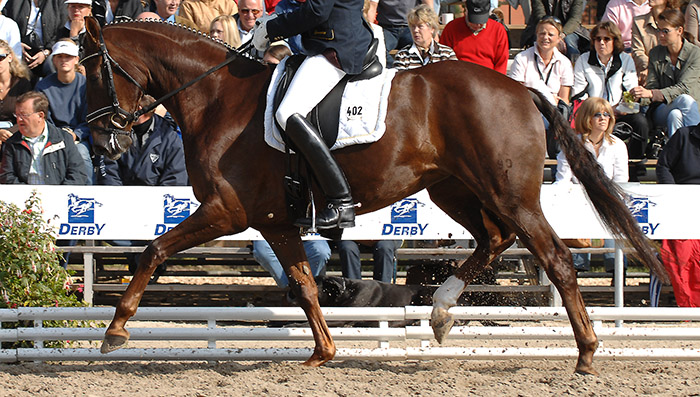
How do we know? The horse will kindly accept the work and remain even in the reins; the gaits will remain pure, fluid, elastic and rhythmic through all the work. The back will be easy to sit on.
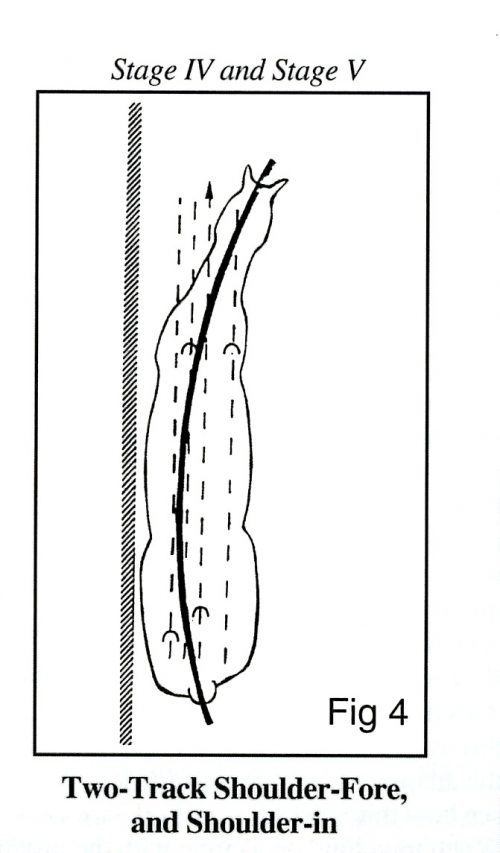
* The shoulders are brought yet further into the school, going through a four track phase (two track shoulder-fore, Fig 4) just before arriving at the true three track shoulder-in (Fig 5)
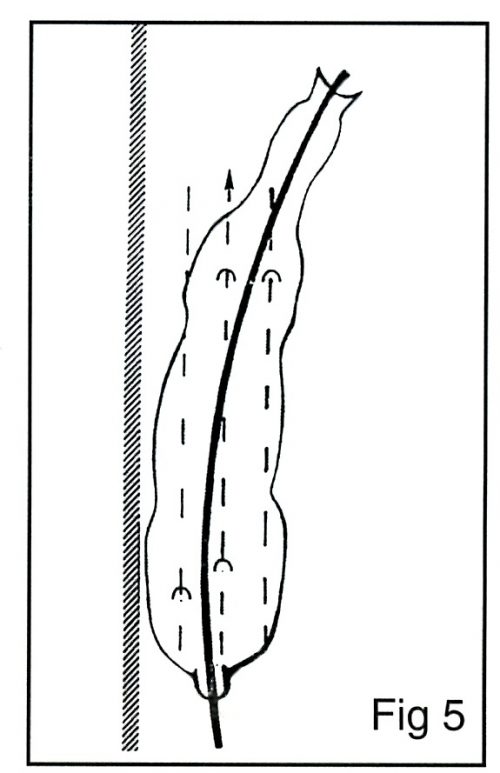
* These positions/exercises confirm the horse yet more clearly on the outside aids and solidify the balance and suppleness
* It helps increase the bending in the body, which leads to a yet greater bending of the hindlegs. It is therefore a visible means to develop higher degrees of collection.
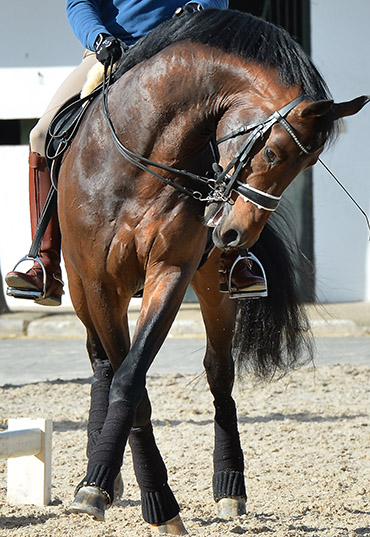
*But do not overbend the neck laterally, especially not at its base.”
Here a brief definition for those who might be unfamiliar with the exact meaning of ‘two-track’ and ‘single-track’ work: any work which is not ridden straight (ie. on a single track, such as Stages 1, 11 & Ill) is referred to as two-track work; this is irrespective of whether the horse’s legs make three or four separate tracks.
The issue is that the forehand and hindquarter each travel on their own separate paths, hence ‘two’ tracks. So only once one or both hind legs are deliberately made to track outside of the dual path taken by the front legs would the work begin to be considered two-track work (see Fig. 4, 5).
Story continues below the advertisement
Real two-track work is not to be confused with involuntary crookedness. It is important to understand that shoulder fore and shoulder-in do not of themselves cause greater bending of the hind legs. Instead they are exercises or positions which, besides assisting in furthering overall suppleness of the hindquarters and obedience to the rider’s legs, gives us access to greater bending of the horse’s body (especially behind the withers), which in turn, when ridden on bent lines, in Stage Ill mode, causes the hind legs to bend more (see Fig 7, S-3, 3X&3Y).
This is why it can be so productive to alternate between the two track shoulder-in up the long wall and the single-track I0 metre circles or voltes at various intervals on the long sides of the school. The greater bending in the body gained during the two track shoulder-in work, is immediately converted into greater bending of the joints of the inside hindleg while on the single track circles. Back and forth between these two modes is the key to success (in moderation of course!)
Stage VI
Croup-in or ‘Travers’
- The croup is ridden to the inside
- This is the third phase (the higher form) of bending: bend and move into the bend (see S-6).
- It is bending, suppling, collecting exercise. It is two track This position is the last to mature because, as a prerequisite to successful croup in/ travers work, the horse needs to be well versed in obedience to the inside leg (both as a forward aiding and as a bending instrument) and that it has subsequently learned to understand and accept the outside aids (especially the outside rein!) This can only be achieved through adequate preparation in the previous stages, in particular Stage II and Stage IV. Progressively, single-track shoulder-fore (see Pt 1), then two track, shoulder-fore (Fig. 4), and finally the true shoulder-in (Fig. 5) are the foundation exercises for all further two track work. Travers is built on it. Note: When the outside leg/inside rein are the predominant aids to achieve turns-on-the-haunches or travers (half pass, croup in) positions, the work must be considered seriously faulty. On a continuous basis there must be a shoulder-in in the travers and a travers in the shoulder-in.
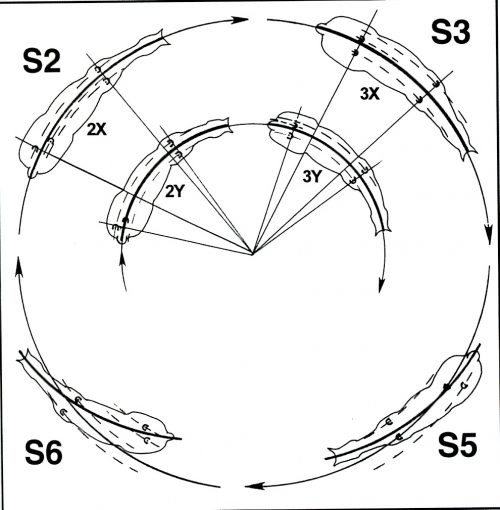
What does this mean?
It means that the horse has properly learned to be off the rider’s inside leg and with a forward intent has learned to come up to, be received by, and accept the outside aids. The shoulder-fore and shoulder-in are the best positions to learn to have an ‘inside-leg/ outside-rein’ oriented riding. Through the appropriate use of this position in judicious combination with the other positions described above, gradually and imperceptibly over the months and years, the haunches grow in suppleness and in their ability to bend and carry more weight, until the ultimate manifestation of high degrees of collection, even the deep levades, are possible without any damage being done to the horse.
Transitions and turns-on-the-haunches are of course other useful training instruments to further polish, hone and balance our living work of art.
In closing, here is a summary of guidelines for our training and riding which are essential if we wish to achieve results which could be considered to be in harmony with the classical ideals and standards of horsemanship
*We must respect the horse
*Work patiently and kindly
* Be prepared for the long haul. With short cuts we only short-change ourselves and our horses
* Let the horse dictate the speed of the training
* Constantly seek to improve on our skills: acquire excellence in our seat and position and in our attitudes towards the horse and tactfulness in our aid-giving and guidance
* Our skills and ability must always be used to help the horse, and must never be used as a weapon against it
* Success lies not merely in doing the recommended exercises, positions and school figures but in how we do them. Things can very quickly become dead and mechanical, so we must stay alert and feeling, ever appropriate to the ‘living moment’ we are experiencing.
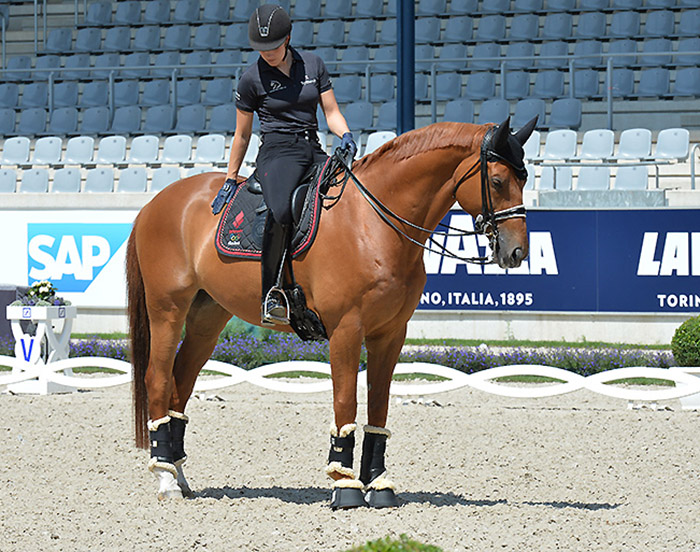
A successful partnership on the scene at the moment, Cathrine Dufour and Cassidy – partners since young horse days, and now winning medals for Denmark…
We must take care when we run into difficulty to refrain from having the training degrade into an adversarial contest. The horse really doesn’t stay up all night trying to figure out ways of doing us in. It is so dearly important that we come to think of training or riding as being an occasion in which we are ‘in cooperation with the horse’ in order to help it to be beautiful, agile, and balanced under us.
We need to learn to encourage it, to show it how to become a whole, viable, and contributing member to the partnership, and we must learn how to allow it do that which we are asking of it.
Riding and training is always a very personal struggle. And the first real enemy in the equation is our lack of discipline and control over our own thoughts, emotions and the attitudes and actions of our bodies, which makes it very difficult for us to ‘aid’ (assist) the horse, clearly and consistently as we are meant to do.
The other causes for our difficulties might be: our work is based on incorrect experience; or we may not be sufficiently advanced to handle a particularly difficult horse; or our talents might not be those which are ideally suited for riding. Any of these difficulties, however, can be overcome, and most of us can learn to be reasonably good riders if the will and enduring effort are present to succeed. That is in fact the nub of effective work, that we raise ourselves up to the real equestrian challenge, putting our egos aside and taking on the task of striving for excellence with modesty, humility, and a kind heart; working patiently for our own sake and for the horses.
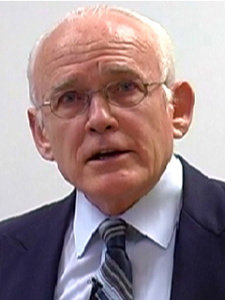
Enjoy your riding!
Looking for top European bloodlines in Australia? You can have the best in the world to suit your mare – Plan now for next season: go to www.ihb.com.au
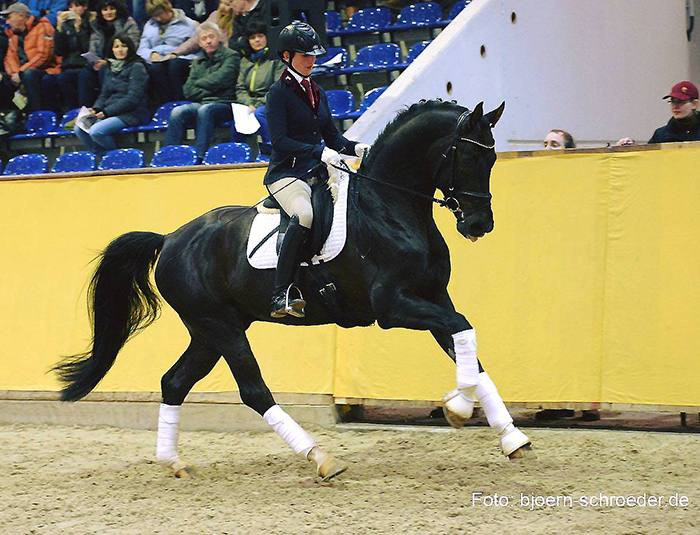
Ben Benicio
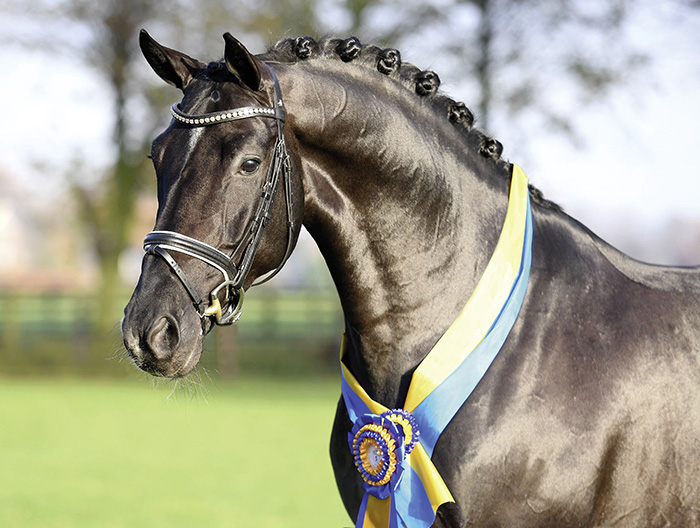
Total Hope

